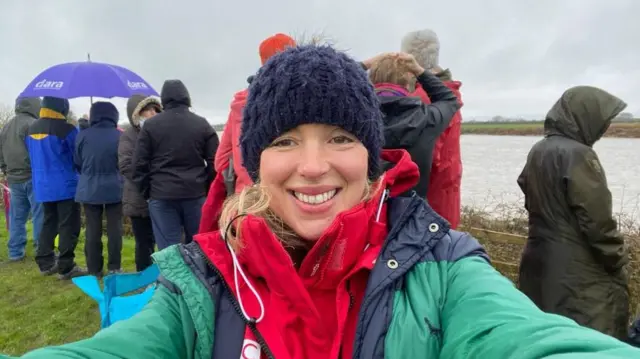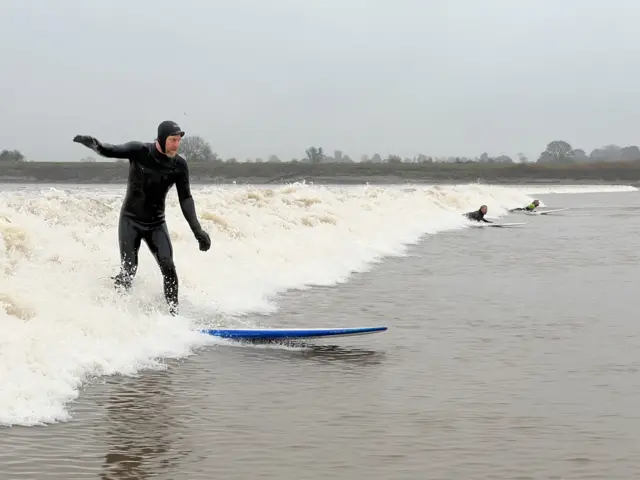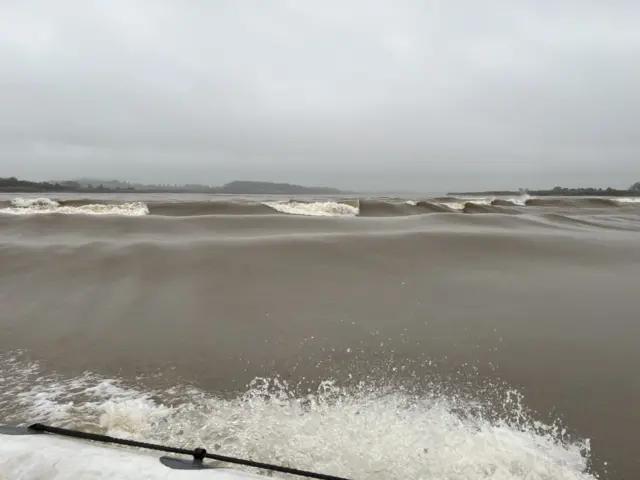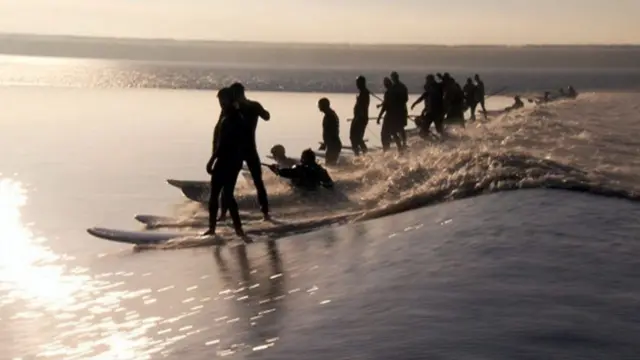In pictures: More is coming from the Severn Borepublished at 08:45 GMT 12 March 2024
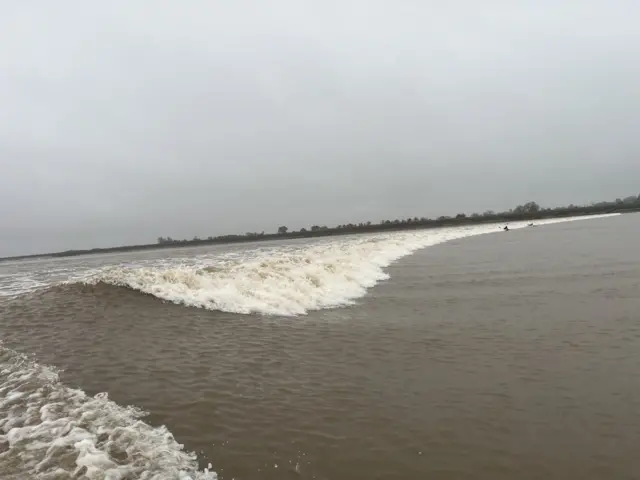
Here is a general view from the River Severn today where people have flocked to see the bore
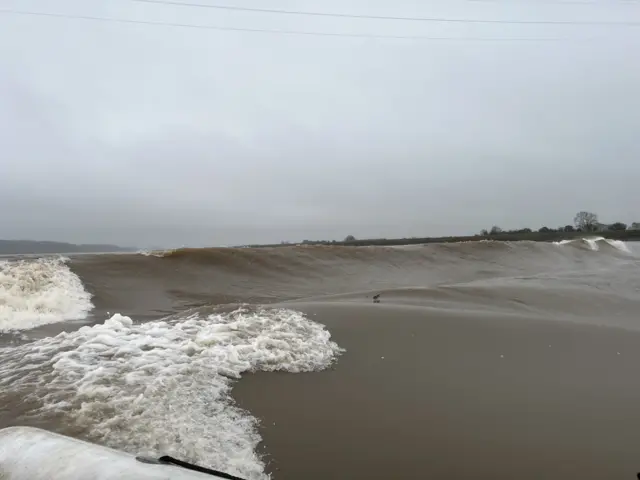
Pictures are coming in taken by the BBC's live camera crew who are on a boat following the bore

A number of surfers are already up and riding the bore
